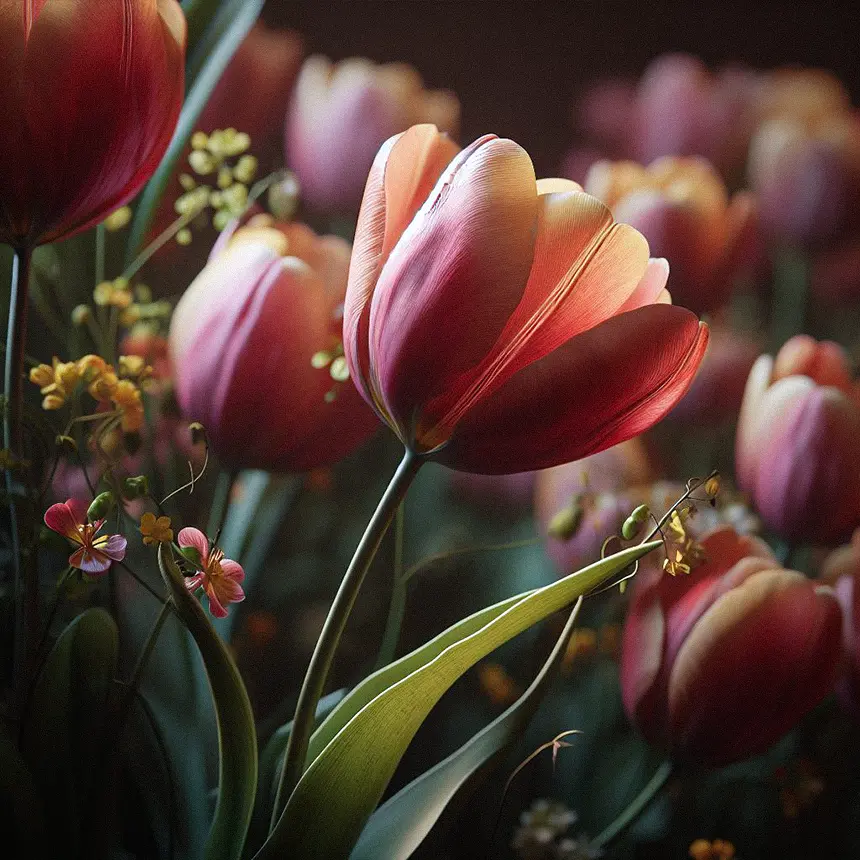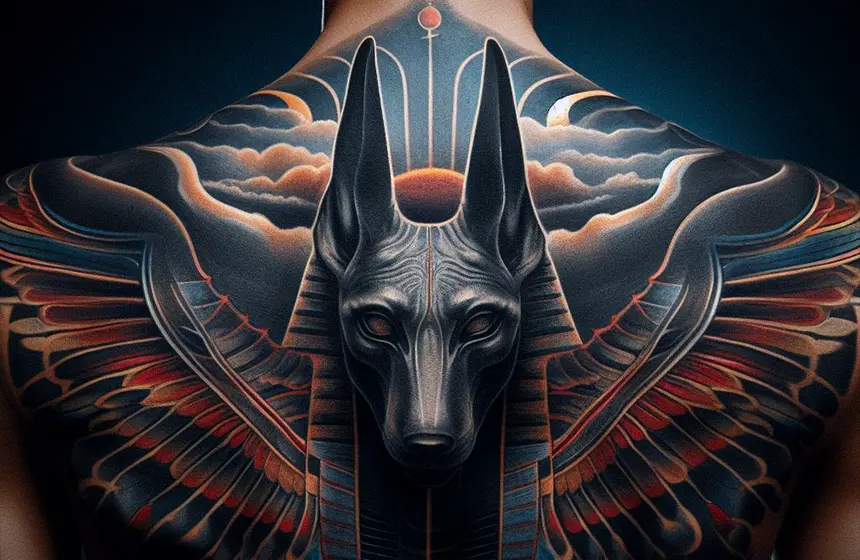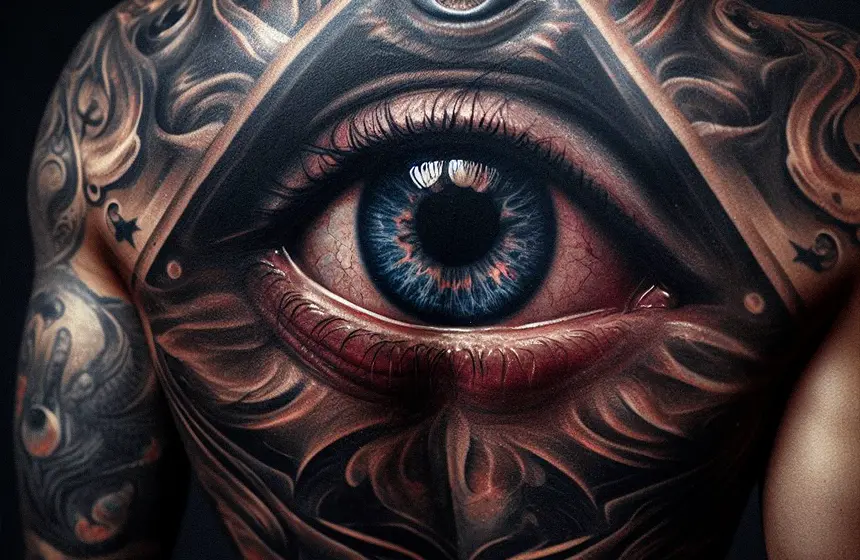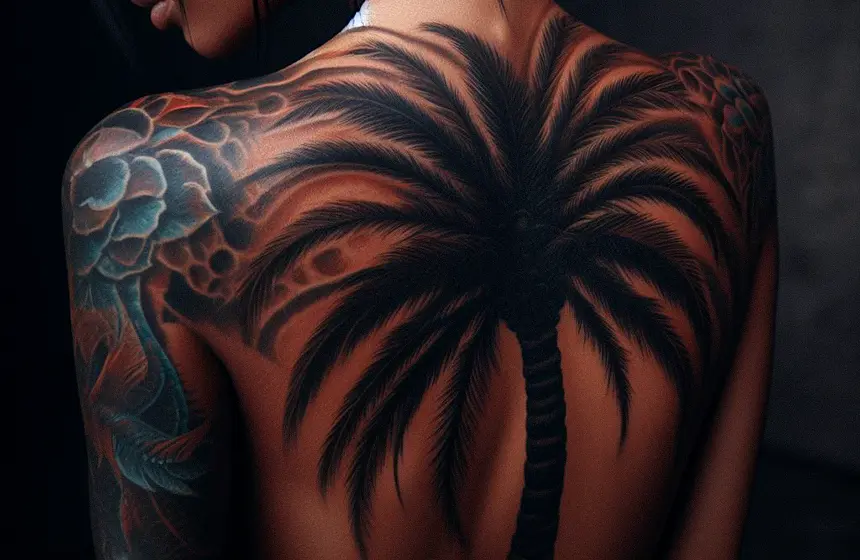Tulips, known for their vibrant colors and elegant shape, have long been revered symbols in various cultures.
This article explores Tulip tattoo meanings, examining the diverse interpretations and personal narratives they encapsulate.
It is an informative quest, offering valuable insights into the compelling world of floral body art.
Table of Contents
What is a Tulip?

The tulip, a popular ornamental flower, is one of over 150 species in the Liliaceae family. Originating in the harsh climes of Central Asia, the tulip’s natural tenacity has only been amplified by centuries of selective breeding.
Its wide variety of vibrant colors and elegant form have made it a favorite in gardens and art, symbolizing a deep emotional connection with beauty and resilience.
A hardy perennial returns each spring, bringing joy and color after the long winter. This strength and beauty combination gives the tulip its unique significance in floral symbolism.
Tulip Tattoo Meanings
Tulip tattoos symbolize simple beauty. These inked blossoms can embody many deep meanings, ranging from love and romance to the promise of new beginnings and growth.
Let’s explore how these tattoos can express beauty and elegance and emotions of happiness and joy.
Love and romance
Tulip tattoos often represent deep affection and romantic commitment in many cultures. This symbol of passion is cherished for its delicate yet resilient nature, much like love itself. A singular tulip tattoo can signify a profound and enduring love, untouched by time or circumstance. It is a silent pledge of devotion, an unwritten vow of togetherness.
In a broader sense, the tulip is a tribute to love’s many faces – the fiery passion of red tulips, the quiet longing of purple, or the pure innocence of white.
New beginnings and growth
Tulips also embody the concepts of new beginnings and growth, making them a popular choice for tattoos that symbolize change, transformation, and personal evolution.
Beauty and elegance
Many people choose to get tulip tattoos as a way to express their admiration for beauty, elegance, and refinement.
These compelling ink designs epitomize the essence of grace, symbolizing deep respect for the natural world’s inherent elegance.
Their vibrant colors and delicate contours often represent a profound dedication to beauty, a celebration of life’s splendor, and a personal commitment to cultivating beauty in one’s life. Their diverse hues can further illustrate the wearer’s unique interpretation of beauty.
In all its glory, this tattoo possesses an emotional intensity that reflects an individual’s inner strength and resilience, subtly hinting at the magnificent blend of fragility and power within each person. Ultimately, a tulip tattoo is a beautiful, meaningful homage to the world of aesthetics.
Happiness and joy
As we delve deeper into the symbolism of tulip tattoos, it becomes evident that these floral designs often carry a profound message of happiness and joy. The tulip is a powerful emblem of bliss and celebration in its vibrant bloom, representing life’s triumphant moments.
A tulip tattoo is like carrying a personal token of joy, a silent declaration of one’s passion for life and happiness. The beauty of a tulip imprinted on the skin is not just an aesthetic choice but a deep-seated symbol of optimism and delight.
The symbolism of tulip tattoos
Tulip tattoos are not just a form of body art; they are potent symbols bearing profound meanings. They are imbued with cultural significance and personal symbolism that reflect the wearer’s identity and beliefs. Understanding the symbolism of tulip tattoos can provide enlightening insights into the diverse expressions of human experience and emotion.
Connection to different cultures and traditions
In body art, tulip tattoos hold many meanings that resonate with different cultures and traditions. The tulip is a revered symbol in Turkish culture, representing paradise on earth and manifesting God’s love. It’s deeply associated with the time of the Ottoman Empire, symbolizing abundance and indulgence.
In the Netherlands, the tulip’s birthplace signifies the briefness of life due to its short blooming periods, serving as a reminder of mortality. Due to its vibrant colors, Chinese traditions link the tulip to fame and perfect love. Tulip tattoos embody universal themes of love, beauty, and the fleeting nature of life, making them a potent symbol in body art worldwide.
Expression of personal values and beliefs
Tulip tattoos often serve as a medium for expressing personal values and beliefs, and their symbolism can vary greatly depending on the individual. For some, a tulip tattoo may symbolize a deep, enduring love, drawing from the flower’s associations with passion and romance. Others might choose this design to convey a message of hope and renewal, reflecting the tulip’s role as a harbinger of spring. Some may see the tulip as a symbol of strength, inspired by its ability to blossom even after a harsh winter.
A tulip tattoo’s personal and emotional resonance makes it a powerful tool for expressing one’s innermost beliefs and values.
Frequently Asked Questions
How Long Does It Take to Heal After Getting a Tulip Tattoo?
The healing process for a tattoo typically takes around 2-3 weeks for the surface skin to heal. Complete healing, including the deeper layers of skin, can take up to 4 months. Aftercare is crucial during this period.
Can Tulip Tattoos Be Designed With Other Symbols?
Yes, tulip tattoos can certainly be combined with other symbols. The design possibilities are endless and can include elements like butterflies, other flowers, or symbols that have personal significance to the individual.
What Are the Popular Colors for Tulip Tattoos?
Popular colors for tulip tattoos range widely, reflecting the flower’s natural diversity. Traditional choices include red, symbolizing love, yellow for happiness, and pink for affection. White, expressing purity, is also a common choice.
How Much Would a Typical Tulip Tattoo Cost?
The cost of a typical tattoo varies widely based on factors such as size, complexity, artist’s experience, and geographic location. On average, expect to pay between $50-$300, with more intricate designs costing more.
How Do I Care for My Tulip Tattoo After Getting It?
After getting a tattoo, ensure proper aftercare for optimal healing. Clean gently with antibacterial soap, apply a thin layer of antibiotic ointment, avoid sun exposure, and refrain from submerging in water until fully healed.





